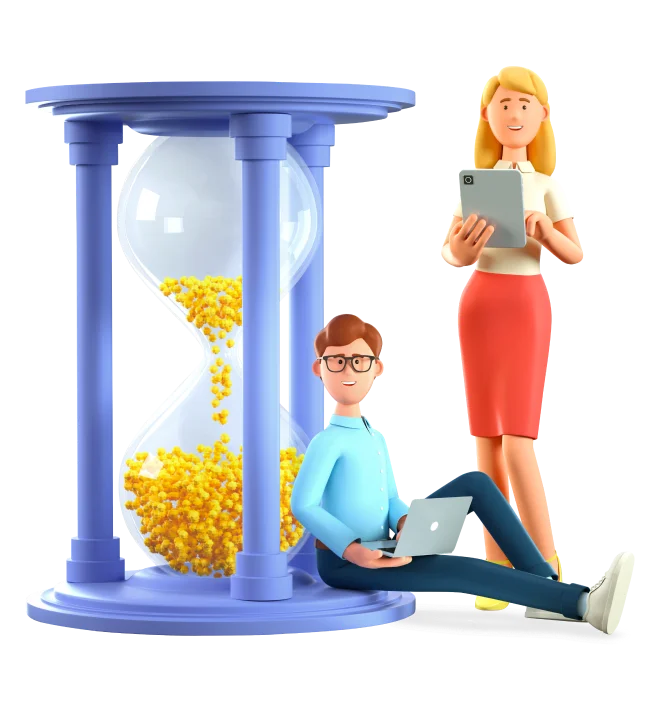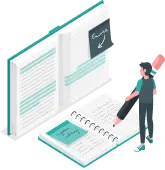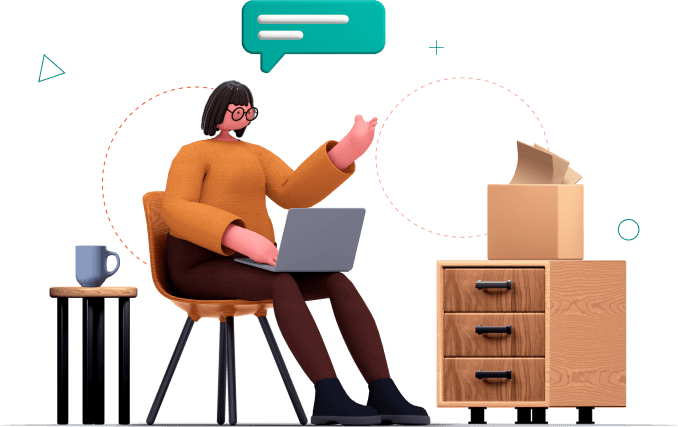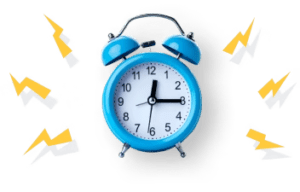Name
Capella University
FPX6416
Instructor’s Name
October 04, 2024
Table of Contents
ToggleNeeds Assessment Meeting with Stakeholders
As the nursing informatics lead and project director of Vila Wellbeing, I am responsible for introducing evidence-based changes to the health information system of Vila Wellbeing. All these are important Changes to enhance patients accessibility who also have barriers such as being located in rural areas or persons with complications that limit their movement. The change also seeks to alleviate pressure on clinicians of whom many have mentioned additional stress and workload from ineffective systems (Reid et al., 2021). With the improvement of the data system Vila Wellbeing wants to provide a comfortable and friendly environment for patients and medical staff to provide better and healthier results. This will be a five and six-month-long project with likely training sessions, trial periods, and feedback-sharing sessions. Considering the external challenges including California’s aging population, the regularity of chronic disease, and the current pandemic, this project is regarded as critical for Vila Wellbeing to maintain state-of-the-art friendly patient care capability.
Survey Current State and Desired Condition of the Data System
One of the issues that came out clearly from the various stakeholder meetings held was that the current health information system has some serious challenges that need to be addressed. Surveys among nurses and other healthcare providers revealed that the communication system interferes with timely patient tracking making the system risky in terms of patient safety (Ulanday, 2023). Conversely, patients’ experiences indicate that most of them lose valuable time, especially those with chronic conditions, as they wait for communications with their providers. On the positive side, the current system has enhanced management of costs, and fewer prescription mistakes, therefore, has provided a standard for safer care (Ulanday, 2023). However, the stakeholders say that the acute need for such an upgrade such as incorporating new remote monitoring gadgets and enhanced communication functions will prepare them for improved levels of healthcare delivery. The idea is the integration of the health care system, for physicians and patients to be in real-time with clear benefits for the quality of care as well as the experience of the patient.
Assess and Define Risks
One of the vulnerabilities in the existing system of Vila Wellbeing is that both RPM and patient portals are completely missing. Before the more recent events, Vila Wellbeing effectively utilized its patient triage system, but this process revealed the lack of effective remote patient assessment during the pandemic. Especially hard hit were the rural folk since being asymptomatic and dealing with little access to healthcare facilities resulted in worsened physical health among patients with chronic illnesses (Ulanday, 2023). They have also noted that even with limited financial margin, there is no possibility of providing constant or RPM which is critical for patients with diseases like diabetes and hypertension. If these risks are unmanaged, they may lead to further compromises of the quality of care deliverable by Vila Wellbeing, which will become even more critical when the company scales up to reach more patients in more distant and less-served regions. To address such gaps necessary to prevent risks of continuation in the future and provide the patient with constant attention.
Define Information System User Best Practices
Remote Patient Monitoring (RPM) is now accepted as an indispensable mechanism for describing ongoing care, especially after the COVID-19 outbreak. According to Malasinghe et al. (2018), using RPM, healthcare providers can timely observe the patients’ vital data and help clinicians deal with the deterioration of health conditions (Laugaland et al., 2023). This is much more relevant when it comes to chronic diseases, such as diabetes, when one or two-point changes in glucose levels between two visits may be missed without constant monitoring. The use of RPM would enable the providers to monitor such changes and intervene early to help the patients modify their behavior regarding health. Further, patient portals as tools can also educate and engage patients enabling them to view, contribute to, and manage their health status. According to (Laugaland et al., 2023) patient portal not only brings satisfaction to the patients but also it also helps in the early identification of new arising disease conditions hence reducing readmissions and improving patient’s health.
Technology Functionality
The effectiveness of the proposed system upgrade significantly relates to both the technology’s operational capabilities and its interfaces. RPM applications have been described as something stakeholders would like to be accessible across platforms, on personal computers, and mobile devices; available to both the providers and the patients, at any time (Gurwitz et al., 2022). The system also has to easily interface with current electronic health records or EHRs, with minimal disruption to service. In addition, patient portals have to be accessible and comprehensible whilst the users are to be able to navigate through their health records and track their medical management as well as engage with their care providers. These functionalities will not only lead to greater patient communication but will also improve the flow of care because the providers will be able to access the most current patient information instantly.
Workflow and Communication
The introduction of RPM technology will undoubtedly dramatically affect organizational workflow and communication within Vila Wellbeing. Currently, medical personnel only get periodic information from patients which decreases personnel’s chances of proactively monitoring patients continuously. With the implementation of RPM, providers will be able to receive consistent data feed from their patients allowing them to check on the shift and make necessary interferences early enough (Grill, 2021). This will help reduce the timing of treatments as well as give the patients the attention they need without necessarily reporting to the clinic frequently. Further, RPM will facilitate the creation of alerts that notify a healthcare provider of changes in a patient’s parameters. According to Grill (2021), integration of RPM technology has been proven to enhance work flow since the preparation of the documentation by staff was highly time-consuming and hence ate into patient care time. In addition, it can reduce the entity’s financial performance through enhancing reimbursement opportunities and attracting more patients hence more clientele because of the quality services it delivers.
Data Capture
Another advantage of RPM and the patient portals IS implementation is the enhancement of data acquisition and consolidation that will be experienced by Vila Wellbeing. Currently, the patients’ information resides in different systems hence when a physician is attending to a patient, he or she has to spend considerable time hunting for information from different applications. With the help of RPM and patient portals, all the necessary data will be collected at one source, which will help to enhance accurate data management (Briggs et al., 2022). Patients too will be freer by not having to repeat the same information or shift between different platforms to monitor their health status. Briggs also stressed that centralized data systems decrease the possibility of mistakes and guarantee that providers use up-to-date data to predict clinical success. This centralized approach will also help Vila Wellbeing leverage data analysis to derive better information about the patients to be treated so they can improve care strategies in the future.
Practice and Outcomes
Remote patient monitoring (RPM) is now considered one of the key drivers to healthcare delivery, especially to those with chronic diseases and insecure elderly. In the past, only a continuous monitoring system could be installed in a hospital setup; however, with the present communications and sensor technology, patients can be monitored in their own homes. This transition is particularly useful when people need frequent health checks, but cannot frequently attend health facilities because of immobility or other challenges (Yoo et al., 2022). Zhai et al., in their recent article, pointed out that conditions such as diabetes, hypertension, and heart disease are most appropriate for RPM because minor fluctuations are vital in the patient’s illness trajectory. RPM devices can monitor vital signs, medication intake and behaviors, and other parameters which helps clinicians make corrections on the fly from data obtained by RPM devices.
NURS FPX 6416 Assessment 1 Conclusion
With these changes slated to be integrated at Vila Wellbeing, RPMs and patient portals will prove pivotal in optimizing healthcare delivery. COVID-19 and the addition of more chronic diseases make these advanced technologies and platforms more crucial than ever before (Staes et al., 2023). With RPM, healthcare providers will be able to provide constant, real-time care so patients better and have a reduced load on the healthcare facilities. Through their acquisition, it will be possible for Vila Wellbeing to create a niche market by ensuring that that patient’s patient-centered care is enhanced by providing both the provider and the patient with adequate technology to assist in the management of health. Implementation of RPM will guarantee that a patient receives needed interventions in time and integration of patient portals will make people take as much responsibility as possible throughout the process of their treatment.
NURS FPX 6416 Assessment 1 References
Briggs, R., McDonough, A., Ellis, G., Bennett, K., O’Neill, D., & Robinson, D. (2022). Comprehensive geriatric assessment for community-dwelling, high-risk, frail, older people. The Cochrane Database of Systematic Reviews, 5(5), CD012705. https://doi.org/10.1002/14651858.CD012705.pub2
Gurwitz, J. H., Quinn, C. C., Abi-Elias, I. H., Adams, A. S., Bartel, R., Bonner, A., Boxer, R., Delude, C., Gifford, D., Hanson, B., Ito, K., Jain, P., Magaziner, J. S., Mazor, K. M., Mitchell, S. L., Mody, L., Nace, D., Ouslander, J., Reifsnyder, J. A., Resnick, B., … Zimmerman, S. (2022). Advancing clinical trials in nursing homes: A proposed roadmap to success. Journal of the American Geriatrics Society, 70(3), 701–708. https://doi.org/10.1111/jgs.17696
Grill C. (2021). Involving stakeholders in research priority setting: a scoping review. Research Involvement and Engagement, 7(1), 75. https://doi.org/10.1186/s40900-021-00318-6
Laugaland, K., Aase, I., Ravik, M., Gonzalez, M. T., & Akerjordet, K. (2023). Exploring stakeholders’ experiences in co-creation initiatives for clinical nursing education: A qualitative study. BMC Nursing, 22(1), 416. https://doi.org/10.1186/s12912-023-01582-5
Reid, L., Maeder, A., Button, D., Breaden, K., & Brommeyer, M. (2021). Defining nursing informatics: A narrative review. Studies in Health Technology and Informatics, 284, 108–112. https://doi.org/10.3233/SHTI210680
Staes, C., Yusuf, S., Hambly, M., Phengphoo, S., & Guo, J. W. (2023). Safety risks and workflow implications associated with nursing-related free-text communication orders. Journal of the American Medical Informatics Association: JAMIA, 30(5), 828–837. https://doi.org/10.1093/jamia/ocad018
Ulanday K. (2023). Nursing Informatics. The American Journal of Nursing, 123(6), 17. https://doi.org/10.1097/01.NAJ.0000938712.59750.38
Yoo, H. J., & Lee, H. (2022). Critical role of information and communication technology in nursing during the COVID-19 pandemic: A qualitative study. Journal of Nursing Management, 30(8), 3677–3685. https://doi.org/10.1111/jonm.13880
Zhai, Y., Yu, Z., Zhang, Q., Qin, W., Yang, C., & Zhang, Y. (2022). Transition to a new nursing information system embedded with clinical decision support: a mixed-method study using the HOT-fit framework. BMC Medical Informatics and Decision Making, 22(1), 310. https://doi.org/10.1186/s12911-022-02041-y








